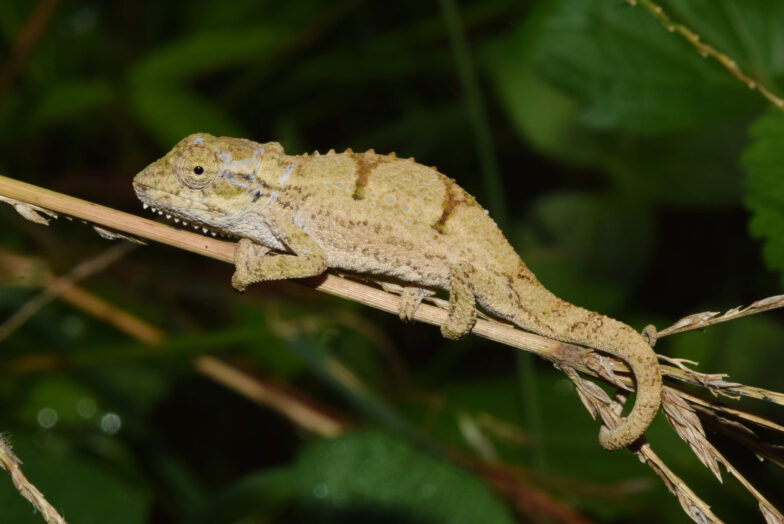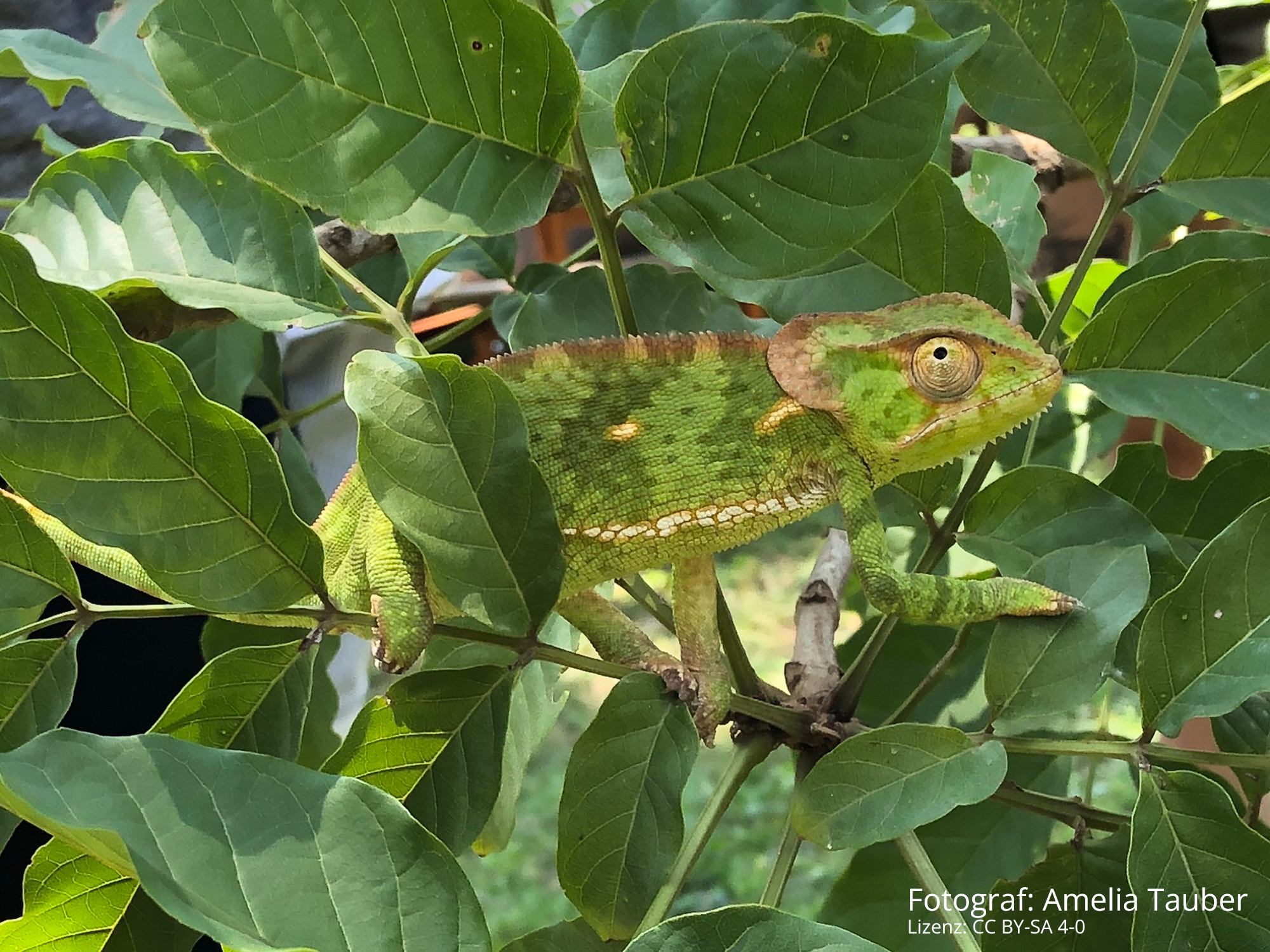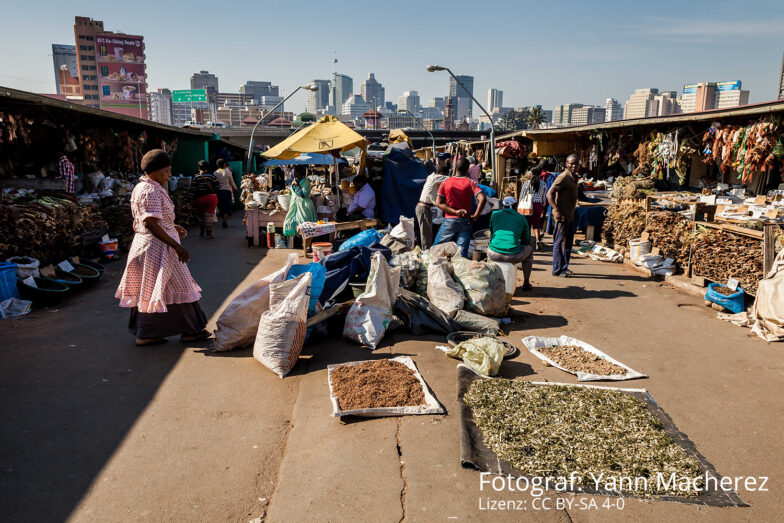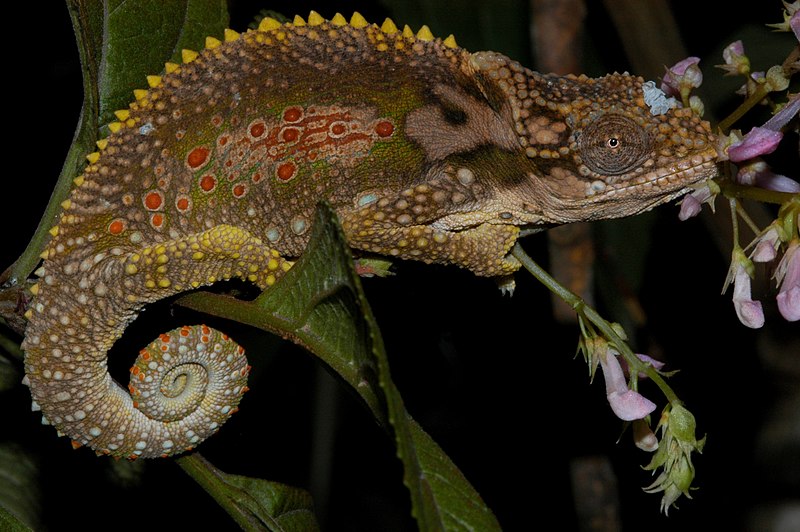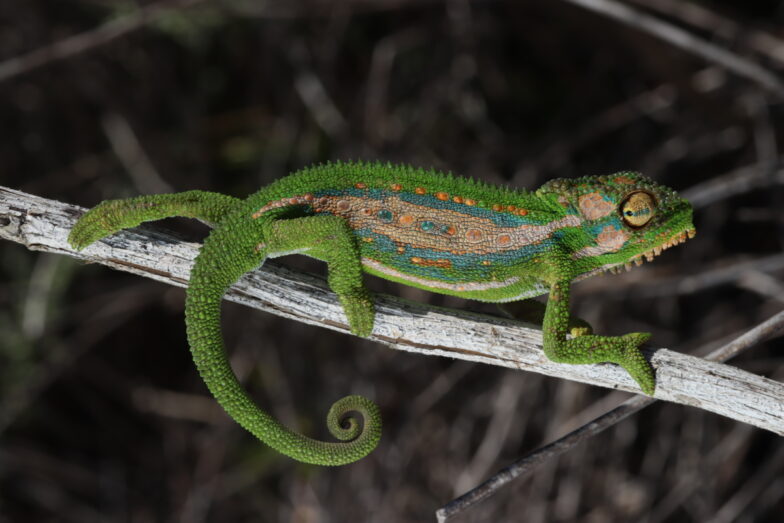The term microbiome has been on everyone’s lips for some years now. In the intestine, this refers to the entirety of all microorganisms, especially bacteria, that colonise the mucous membrane. Now a group of researchers in South Africa has for the first time studied the gut microbiome in chameleons and how it changes in different habitats.
Three species of dwarf chameleons were searched for at night in the province of KwaZulu Natal with the help of torches: Bradypodion melanocephalum, Bradypodion thamnobates and Bradypodion setaroi. All animals were kept in containers for 24 hours and then released at the site. For each species, 10 buccal swabs and 10 faecal samples were collected in a natural and an urban habitat, resulting in a total of 120 samples. In the laboratory, DNA was extracted from the samples, amplified by PCR and then sequenced. Phylogenetic trees were created and statistical comparisons were made between the samples.
The samples were also analysed for zoonotic pathogens such as salmonella. However, only Campylobacter, Escherichia and Serratia were detected in human pathogens in the faeces. The authors conclude that the zoonotic potential of the microbiome of dwarf chameleons is very low.
In total, almost 350 different bacterial species were detected in the microbiome of the dwarf chameleons, which corresponds to other reptiles such as anoles and turtles. Proteobacteria, Firmicutes and Bacteroidota were most abundant in all samples. Overall, the microbiome was very similar in both buccal swab and faecal samples with only a few exceptions and slightly different depending on the species. The differences in the microbiome between natural and urban habitats were much smaller than expected. The microbiome of the buccal swab of Bradypodion melanocephalum living in urban environments showed more Caulobacteraceae and less Enterococcaceae than that in natural habitats, and Desulfovibrionaceae were more common in the faeces of urban animals. The microbiome of Bradypodion thamnobates showed more Ruminococcaceae and Akkermanisaceae in the faecal samples of urban chameleons. A striking feature of dwarf chameleons is the difference between the microbiota in the mouth and rectum, which has not yet been observed in other vertebrates. It remains to be seen whether chameleons in the animal kingdom have a specialized microbiome that could explain these differences.
Anthropogenic reverberations on the gut microbiome of dwarf chameleons (Bradypodion)
Matthew G. Adair, Krystal A. Tolley, Bettine Jansen van Vuuren, Jessica Marie da Silva
PeerJ 13, 2025
DOI: 10.7717/peerj.18811
Photo: Bradypodion melanocephalum, photographed by Marius Burger



